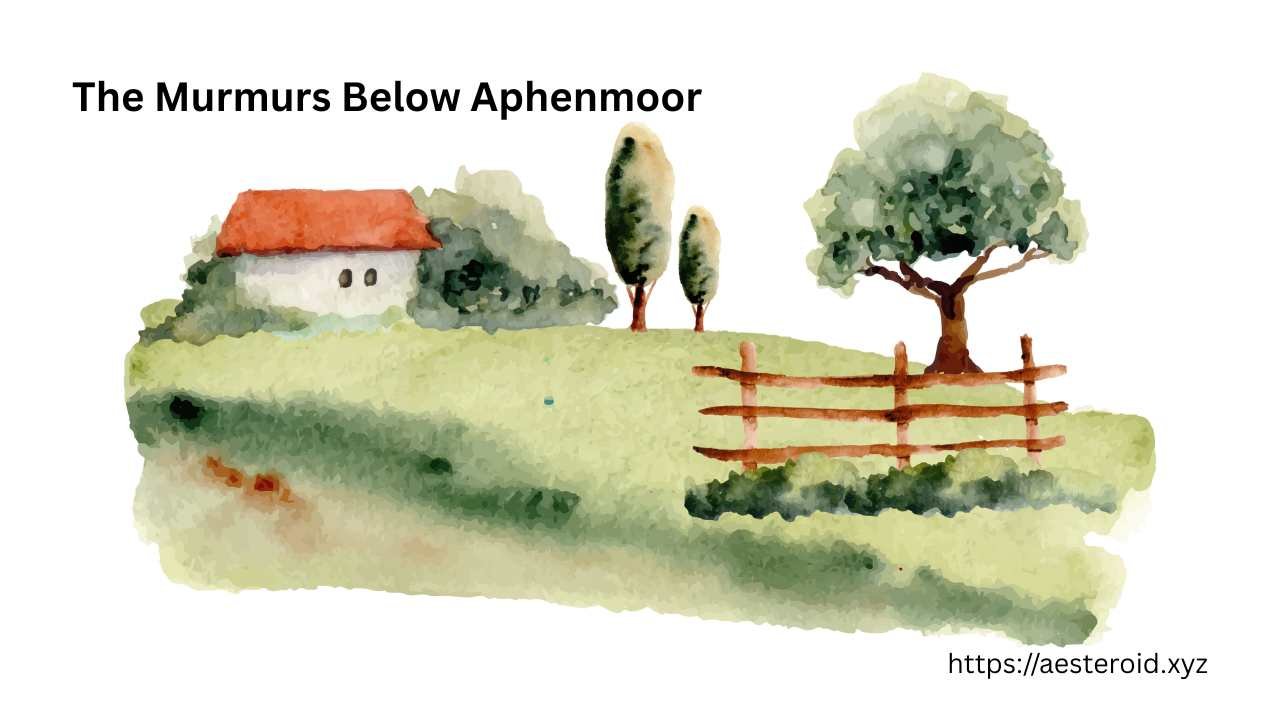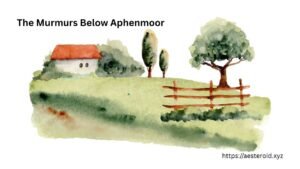
The Murmurs Below Aphenmoor
I. The Forgotten Shoreline
The village of Aphenmoor was not listed on any contemporary map. It was whispered about in the margins of regional folklore, a place “out beyond the bone coast,” as one ancient sea log called it. Even the roads that led there had ceased to exist, overtaken by brambles and landslides. Yet Nathaniel Crowthorne, doctoral fellow in anthropology at Miskatonic University, arrived after a month’s search, led by coordinates in an unsent 18th-century letter from a scholar named H.J. Mirwood.
The letter was brief, but cryptic:
“There is a sound beneath the loam, as if old gods whisper still. I fear I have come too close. They sleep not. They listen.”
The village sat in a permanent mist, low and grey, smeared across hills that sloped toward the slate sea. Time moved strangely here. Nathaniel noticed the sun did not rise so much as pale the sky for a few hours before retreating again. Villagers—fewer than fifty, by his count—offered no hospitality and showed no recognition when he mentioned Mirwood or the chapel. Their silence was not hostile; it was resigned, like old men at a funeral that had lasted generations.
II. The Chapel Without a Name
The chapel, built of damp black stone, stood at the edge of the cliffside—unadorned, windowless, and sealed. No cross, no bell, no door handle. It was older than any nearby structure, perhaps older than the settlement itself. Nathaniel spent his first week trying to understand why a religious building would be constructed in such an inaccessible location. He mapped carvings along the foundation: concentric spirals, star-shapes within circles, and lines that always bent subtly inward as though pulled toward a center.
One evening, while examining these glyphs, Nathaniel felt a vibration beneath the earth—like something turning in its sleep. He dismissed it as coastal tremors. But each night, the sensation returned, stronger, accompanied by faint murmurs on the wind. Not the sea. Not birds. Voices. As if the soil remembered speech.
III. The Letter of H.J. Mirwood
On the eighth day, Nathaniel found it.
Hidden beneath loose floorboards in the rectory was a locked case containing several artifacts: a journal, a brass compass that spun erratically even when still, and a bundle of aged vellum pages—notes, sketches, and letters by Mirwood. He had stayed in the same house, conducting the same investigation, a century and a half earlier.
Mirwood wrote of townsfolk with webbed hands, of hymns sung not to Christ but to something “old and submerged.” He mentioned a rite performed on the equinox, conducted at low tide when the reef path emerged briefly from the sea. The final entry in his journal was unfinished:
“I have seen the library, and its shelves of calcified tongues. They speak still, though no air passes their lips. I go now to the chapel. If I do not return…”
The pages ended there. Nathaniel slept little that night. The humming beneath the floor grew louder. He dreamed of tides that moved beneath the bedrock, of bones tangled in seaweed, and of eyes in the walls—unblinking, ancient, and wide with hunger.
IV. The Passage Beneath
On the ninth night, the door to the chapel was open.
No footsteps had marked the wet grass. No one acknowledged the change. The villagers simply turned their backs when Nathaniel passed them that morning.
Inside, the air was colder than outside, stale and dense, like an unsealed tomb. The walls bore carvings in the same unnatural symbols. In the center of the floor was a stone altar with a spiral depression at its heart. Beneath it, a stairwell led into darkness—too steep, too long, descending deeper than the cliff should have allowed.
The deeper he went, the less he heard his own footsteps, until even breath seemed swallowed by the dark.
The tunnel opened into a cavern—not of natural formation. Colossal columns shaped like vertebrae rose into the ceiling. The walls were engraved with an alien script—geometries that shifted when not directly observed. At the center stood a monolith, taller than any cathedral spire, shaped not like a god but like an absence in the shape of worship.
Beneath it, petrified bodies knelt in rows. Fossilized monks, mouths wide open, frozen mid-chant. Their robes were intact, but their faces had long since melted. At the far end of the cavern, a pale light shimmered through a fissure in the rock—green and thick as seawater. And in that glow, something moved.
V. The Drowned One
It did not walk. It rose—levitated by nothing, suspended by will or force alone. Its form was obscured: a mass of limbs that bent the wrong way, skin that looked translucent and poured over bones like wax. It had no face. It needed none. When it turned toward Nathaniel, he felt its gaze inside his skull.
Then came the voice—not a sound, but a presence in his mind. Not speech, but remembrance.
“You have come. As he came. As they will come.”
The vision came in waves: of oceans evaporated from planets long dead; of ships sailing through the black between stars; of Earth not as a creation but as a cage for that which should not move freely. Humanity was an unintended bloom upon a locked cell.
It spoke of the True Shape of Time—that history did not flow forward but spiraled back on itself, endlessly repeating until the locks weakened. And the spiral, Nathaniel realized, matched the carvings on the chapel floor.
Each time the spiral closes, the voice said, one may escape.
“You are the witness. You are the voice. Return. Speak. Prepare the door.”
Then it was gone.
VI. The Surface
Nathaniel awoke in the chapel. His watch was stopped. His compass pointed downward. The tide was high. No path remained on the reef. But the chapel door remained open, and the villagers, for the first time, acknowledged him.
An old man, his eyes pale with cataract, muttered without turning his head:
“You went below. You came back hollow.”
That night, Nathaniel’s dreams no longer belonged to him. He saw through other eyes—nameless ones, old ones—walking cities beneath the seafloor, gazing up through leagues of blackness toward the shore. Waiting.
He wrote daily, obsessively, scrawling symbols that pulsed under his pen. He could no longer eat food. The hum below the chapel became music. He smiled without meaning to.
Three weeks later, he vanished.
Only his journal remained—mailed without postage, received at Miskatonic in a plain envelope with no return address. The journal was soaked in brine. Its final page read:
“The spiral has closed again. I am beneath. And I am listening.”
Epilogue
In Aphenmoor, the tides have shifted.
Where once the chapel stood silent, now it hums each night—barely audible, a low note carried by the wind. Locals no longer go near it. New symbols have appeared along the cliffs—carved fresh, yet no hands are seen. Children speak words they do not understand. They draw spirals in the dirt.
And at every equinox, the tide parts just enough to reveal the path to the reef.
Where something waits, just below.
Still listening.
Still dreaming.
And almost awake.
Disclaimer
The above story is a work of fiction and does not originate from any other similar stories or violate any copyrights. Viewer discretion is advised.

